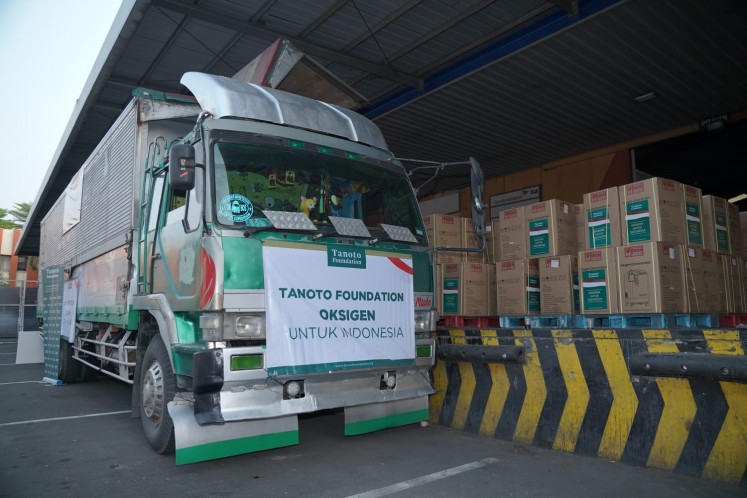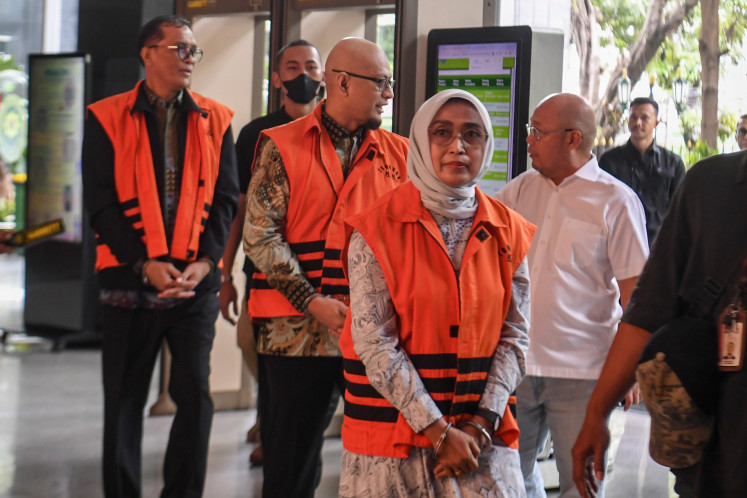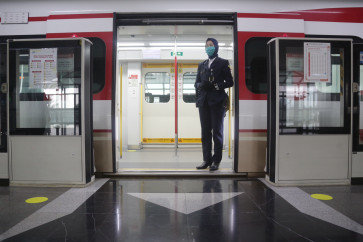Popular Reads
Top Results
Can't find what you're looking for?
View all search resultsPopular Reads
Top Results
Can't find what you're looking for?
View all search resultsAnalysis: Freshly launched, LRT already grappling with operational glitches
Change text size
Gift Premium Articles
to Anyone
A
fter several delays and subsequent controversies, the Greater Jakarta LRT finally commenced official commercial operations on Monday. Within three days of operation, however, the LRT has encountered a series of issues, including train delays, train door malfunctions and sudden power outages leading to abrupt train stops. These operational problems have added to an array of controversies that have clouded the development of the LRT.
Inaugurating the Greater Jakarta LRT, President Joko “Jokowi” Widodo personally took a ride on the train from Harjamukti Station in Depok to Cawang Station in South Jakarta. Jokowi was accompanied by Transportation Minister Budi Karya Sumadi, Finance Minister Sri Mulyani Indrawati and Coordinating Maritime Affairs and Investment Minister Luhut Binsar Pandjaitan. The President expressed his pride in the fact that the national achievement was now operational and available for the benefit of people commuting to Jakarta.
Transportation Minister Budi Karya highlighted that the LRT was now connected with various other modes of transportation in and around the capital city. These included the Commuter Rail Line, the Transjakarta Bus system and even Microtrans, all operating within the JakLingko integrated transportation network. Furthermore, there are plans to eventually integrate the LRT with the Jakarta-Bandung high-speed railway.
The LRT serves commuters in Bogor, Depok and Bekasi traveling to and from Jakarta via 18 stations. This network encompasses two travel routes: the Cibubur Line and the Bekasi Line. During its full operational hours, the LRT is available for travel from 5:00 a.m. to 11:30 p.m. To bolster public enthusiasm for the LRT, the government introduced a promotional fare of Rp 5,000 for all routes. But this promotional fair will last until the end of September. After that, the LRT fare will comprise of a Rp 5,000 basic fare plus Rp 700 per kilometer of the trip.
People responded enthusiastically to the LRT launch, with thousands of commuters packing the LRT trains. The initial excitement among the public to experience the LRT, however, has been replaced by disappointment. On Wednesday, for example, thousands of passengers on the Bekasi Line were held up for almost an hour due to an LRT train door malfunction before the affected train was moved to the depot for service. On the same day, again the Bekasi Line LRT trains suddenly stopped on the way due to an electricity supply problem.
Disappointed passengers expressed their anger on social media, making the issue viral, prompting PT Kereta Api Indonesia to make an apology. These operational disruptions were not entirely unforeseeable. Earlier in August, Deputy State-Owned Enterprises (SOEs) Minister Kartiko Wirjoatmodjo (Tiko) warned about the specification discrepancies between the 32 trains produced by state-owned PT INKA and the software developed by Siemens AG. Also, various technical issues, including recurring power supply interruptions, had already been highlighted during internal technical trials.
What’s more



















